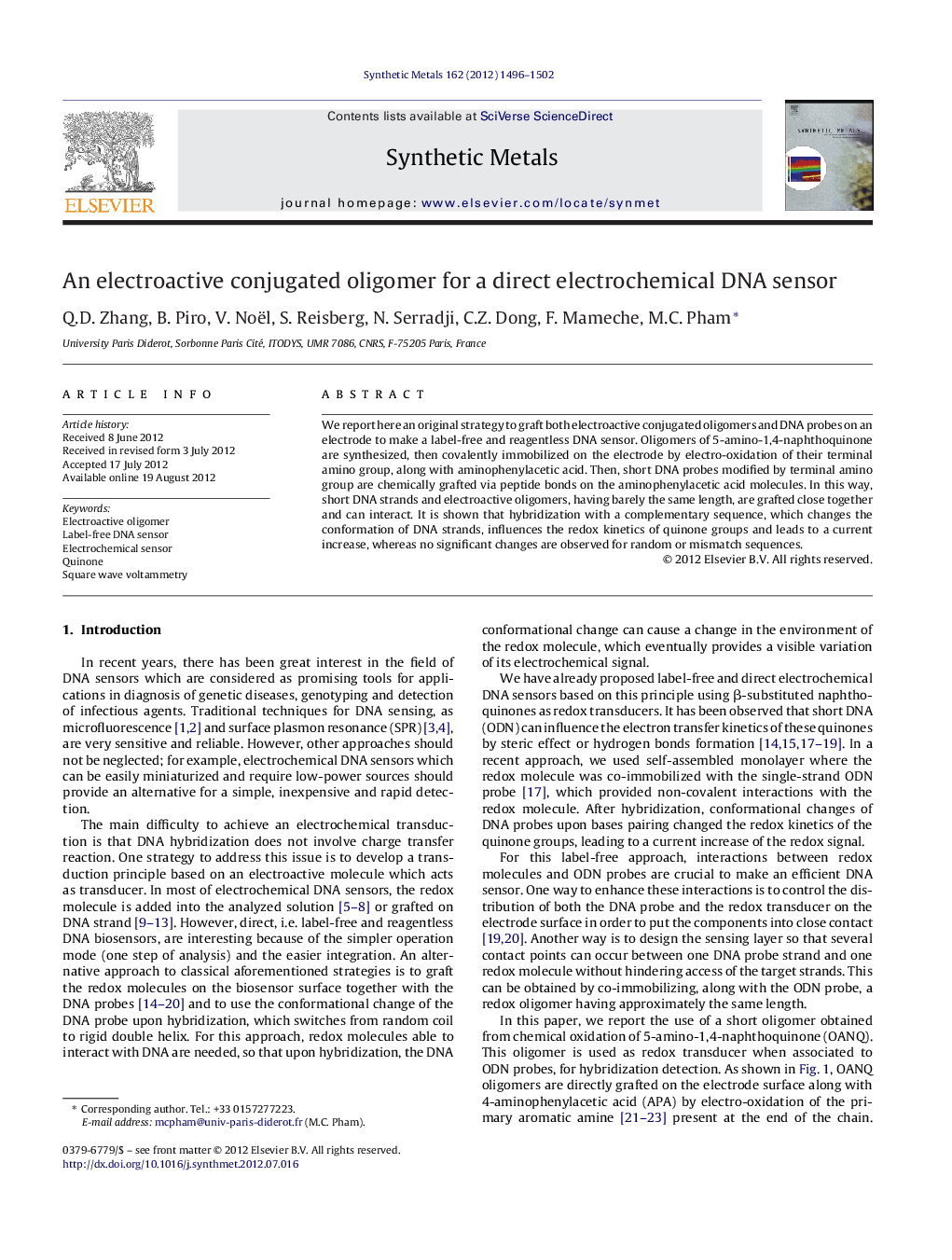| Article ID | Journal | Published Year | Pages | File Type |
|---|---|---|---|---|
| 1441870 | Synthetic Metals | 2012 | 7 Pages |
We report here an original strategy to graft both electroactive conjugated oligomers and DNA probes on an electrode to make a label-free and reagentless DNA sensor. Oligomers of 5-amino-1,4-naphthoquinone are synthesized, then covalently immobilized on the electrode by electro-oxidation of their terminal amino group, along with aminophenylacetic acid. Then, short DNA probes modified by terminal amino group are chemically grafted via peptide bonds on the aminophenylacetic acid molecules. In this way, short DNA strands and electroactive oligomers, having barely the same length, are grafted close together and can interact. It is shown that hybridization with a complementary sequence, which changes the conformation of DNA strands, influences the redox kinetics of quinone groups and leads to a current increase, whereas no significant changes are observed for random or mismatch sequences.
Graphical abstractFigure optionsDownload full-size imageDownload as PowerPoint slideHighlights► Strategy to graft electroactive conjugated oligomers and DNA probes on an electrode. ► Label-free and reagentless DNA sensor. ► DNA strands interact with the electroactive oligomers and change their electroactivity. ► Hybridization leads to a current increase, whereas mismatch leads to no change.
